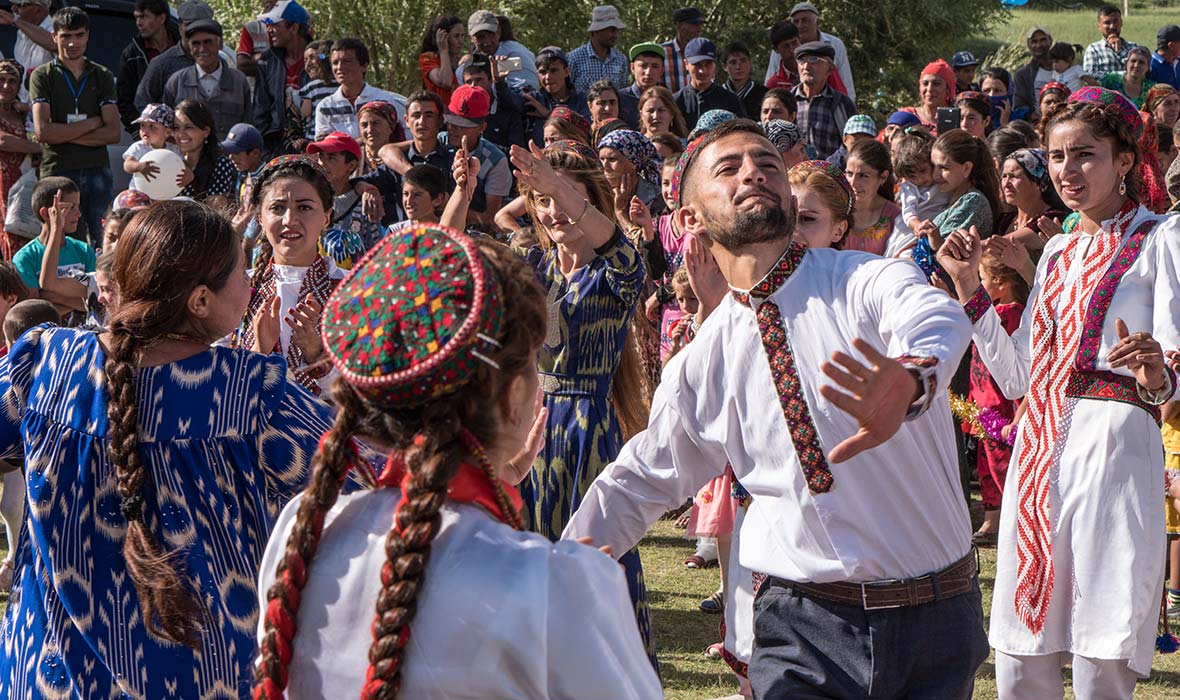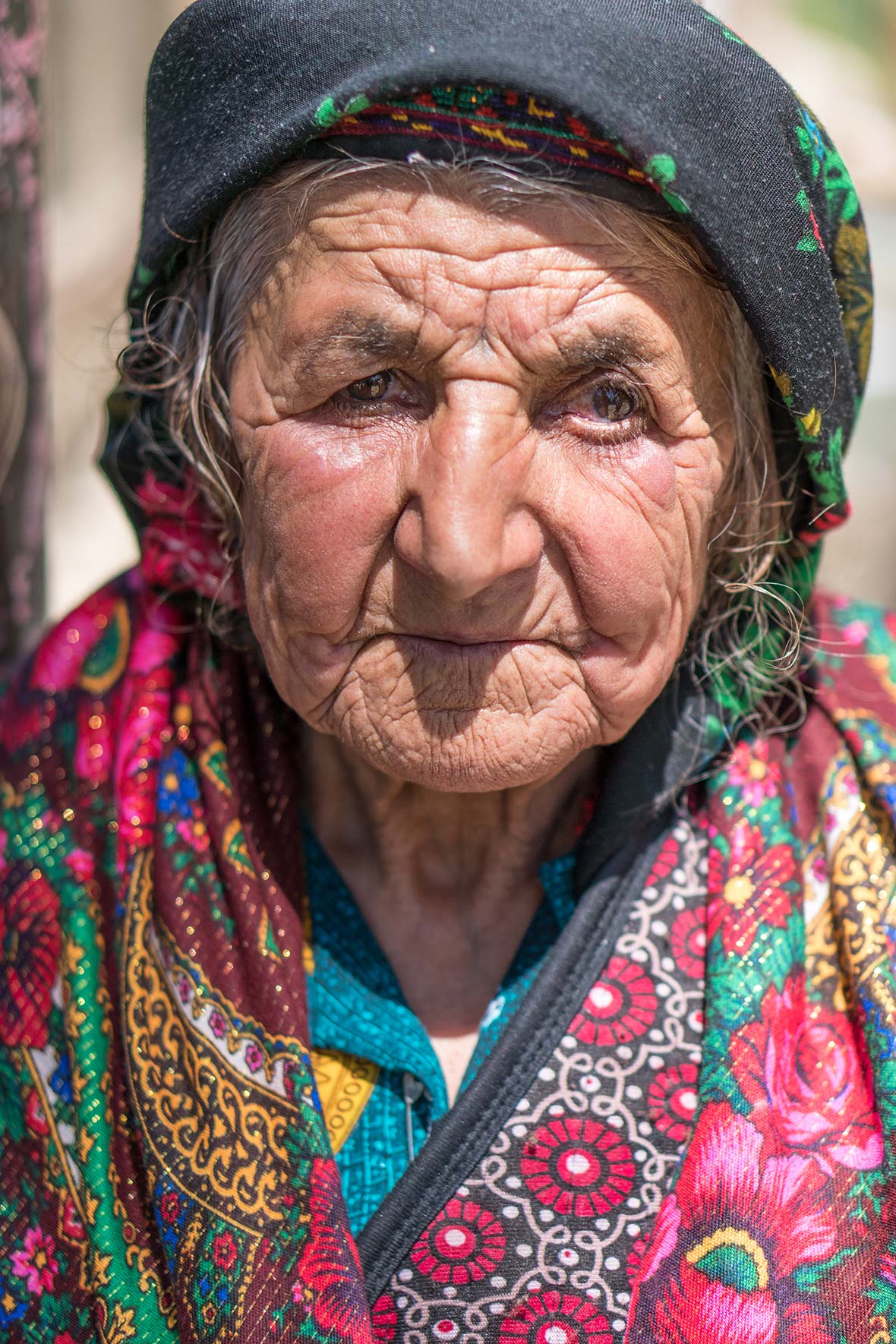Now-capped peaks, dusty dirt roads, pastoral villages – you might not imagine today but the Wakhan Valley was once a part of the world’s most famous trade route. This region’s reputation as a fulcrum on the Silk Road connecting Europe and Asia has left an indelible impression on the unique culture of the Wakhi people. Even today, the Wakhan Valley is a meeting of worlds; travelers can look over into Afghanistan from Tajikistan on a road that will take them in view of China, Pakistan, and Kashmir.

ABOVE: Tajik woman in the Wakhan Valley.
Here, travelers can explore remnants of a bygone world: petroglyphs in the mountains above Langar, the ancient Yamchun Fortress, and the abiding culture of the Wakhi, truly one of the warmest and most inviting cultures in Central Asia.
A week-long road trip along the M41 highway is a journey for the intrepid. There won’t be high-thread count sheets or stays in luxurious five-star hotels. In fact, crawling along the edge of the Wakhan Valley’s roads, there will undoubtedly be quite a few white-knuckle moments. But the reward for this is natural beauty experienced by few, from the towering Pamir Mountains and views of the Hindu Kush to the verdant poplar forests and rapids of the powerful Panj River. This is a luxury destination because it is difficult.

ABOVE: Khorog on the Pamir Highway.
Millennia-old Buddhist stupas, open-air Zoroastrian temples with ibex horns, and the museum of the mystic poet Mubarak-i Wakhani tell the story of a borderland in flux since long before Marco Polo.
Intrepid travelers are advised to take the road from Dushanbe in Tajikistan through the Wakhan Valley all the way to Bishkek in Kyrgyzstan on an epic multi-county Pamir Highway road trip.
Where to Stay

ABOVE: Dancing in the Wakhan Valley.
Stay at the Hyatt Regency in Dushanbe and take in the sights of the capital before hitting the road on a journey down the M41 highway. In Qalai-Khumb, travelers can enjoy the hospitality of a local family, as homestays are pretty much the only lodging option in the vicinity. Continuing into the Pamirs, visitors can view the craggy rock formations while bathing in turquoise mineral hot springs in an area once mined for Badakhshani rubies and lapis lazuli. Khorog, Ishkashim, Langar, Murghab, and Kizylart make appropriate stopping points before arriving in Osh in Kyrgyzstan.
Travelers rely on basic guesthouses in the Wakhan Valley and indeed all along the Pamir Highway. Accommodations may not be luxurious, but the welcome is warm. Expect electric and coal heating, hot water, showers, and outdoor toilets – as well as traditional cuisine.
What to Do

- EXPLORE DUSHANBE
Wander through canopied city parks and pastel-hued Soviet apartment blocks in the Tajik capital of Dushanbe. A gilded arch and statue on Rudaki Avenue commemorate 9th Century Tajik warrior and founder of the Samanid Dynasty, Ismoili Somoni.
- MEET THE WAKHI PEOPLE
You won’t have to seek out opportunities for exchange with the people of Badakhshan, who will likely invite you into their homes to partake in local festivities. Greet the folks waiting for their turn to bathe at Bibi Fatima Zahra – men and women bathe separately in the natural hot springs – and don’t be surprised by questions and invitations to tea
- PEEK OVER THE PANJ
Beginning in the Kulyab region, travelers will start to see green Afghani villages across the Panj River only a short distance away. If the waters are calm, wading in the river with local villagers may even put you on the Afghanistan side. In Ishkahim you can visit a market that straddles both sides of the border. The Khakha Fortress, a ruin of the 4th Century Kushan Empire, is a bridge over the Panj River, which was established as the border of the Russian and British empires in 1893.



